

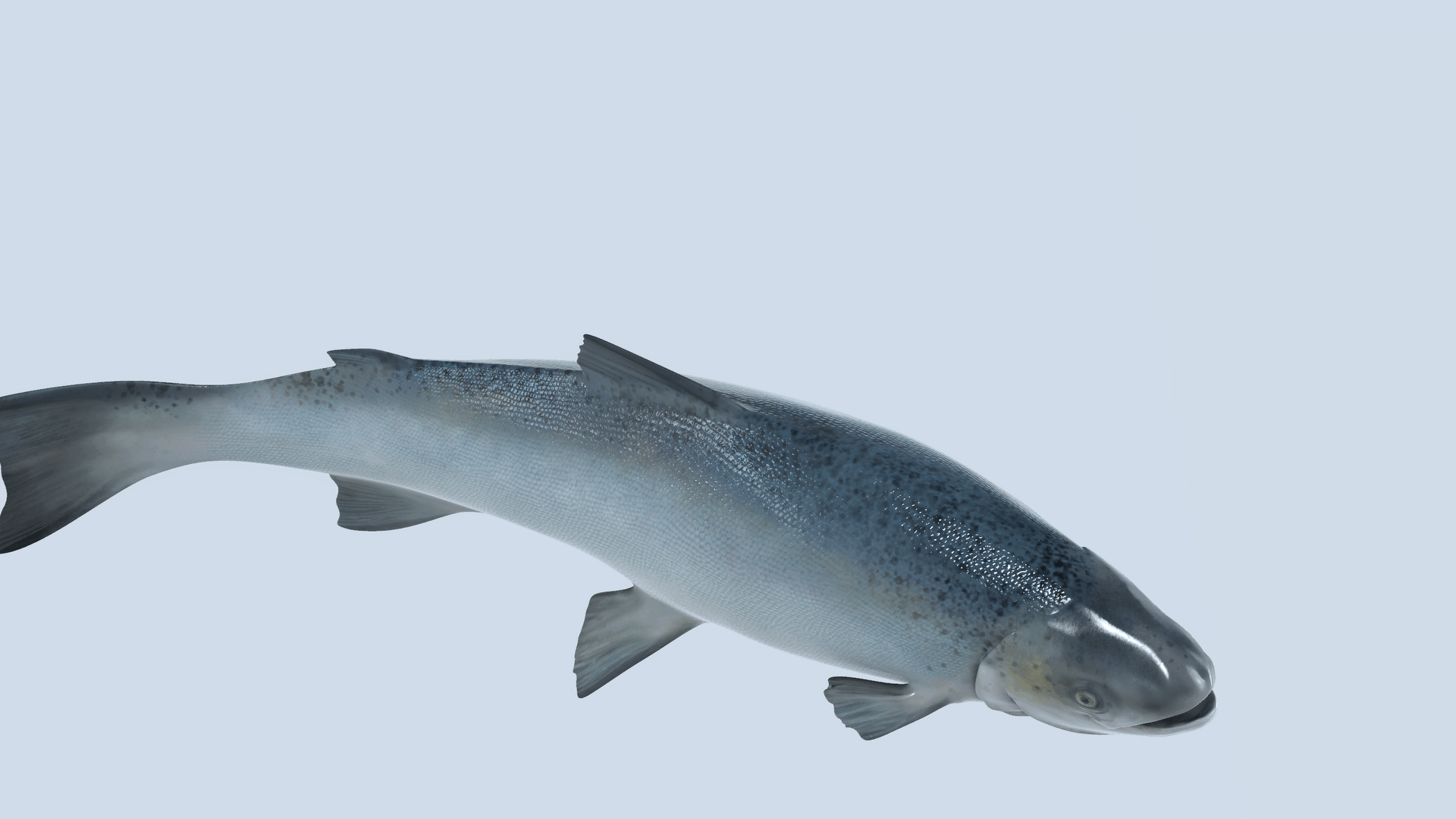
Paralachs
(Lachs is the German word for salmon)
Paralachs is an interactive installation featuring a holographic 3D salmon that rotates to align with a single viewer‘s perspective using a machine learning object detection module. Each movement of the fish corresponds to a single perspective, mediated by a webcam, thus simulating the so-called parallax effect.
As Paralachs detects only one viewer at a time, the result is a solitary fish suspended in restless movement, twisting only for the singular gaze that meets it. Each point of view contradicts the next and the next, each rotation twitches further into confusion and ambiguity. Until perspective itself becomes like an animal observed; a Lachs unsure of its own coherence.
Video docu: Richard Lu Jia Wellershoff
Sounddesign: Jonas Meyburg
watch video

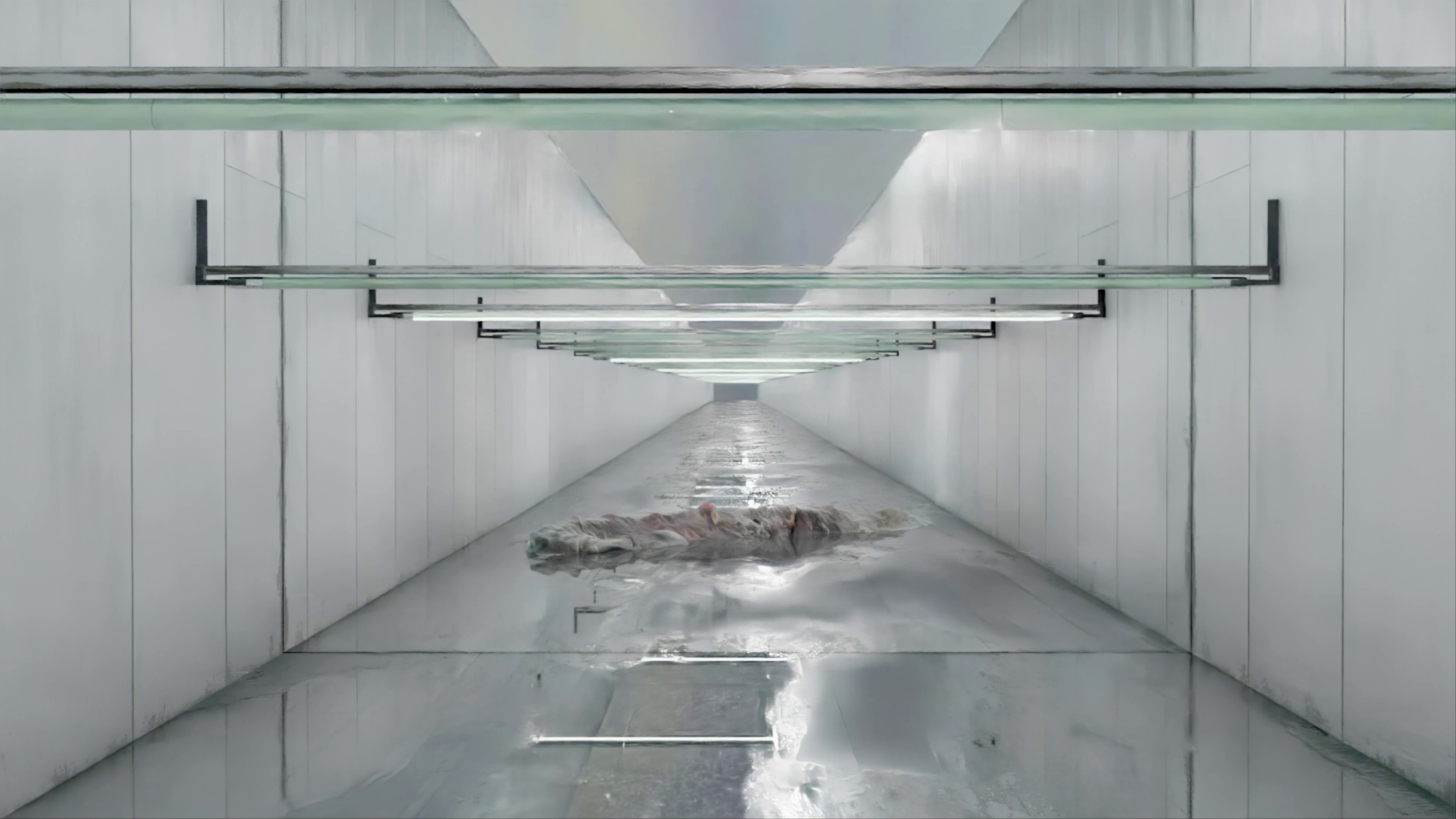
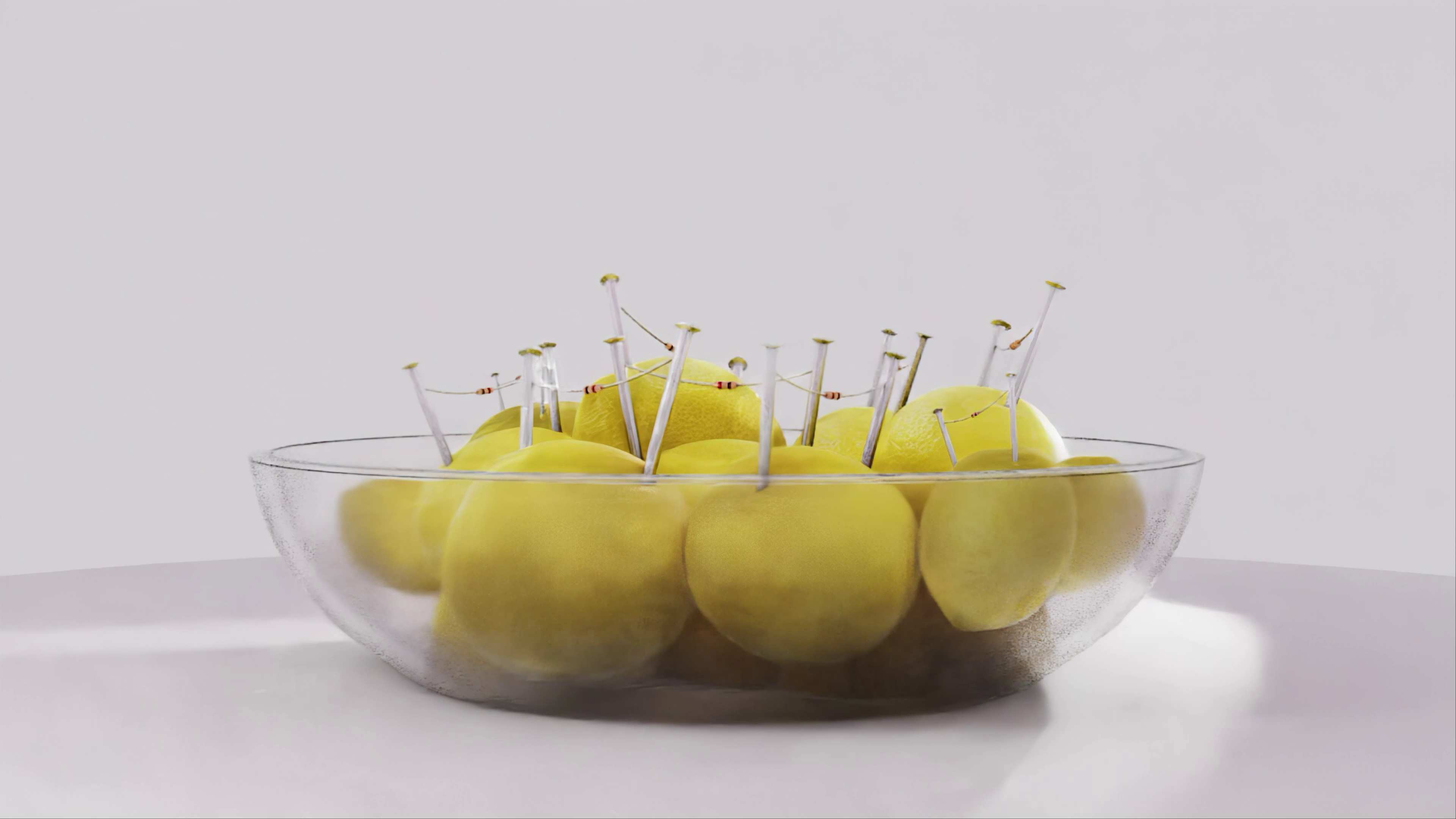

Banale Fraktale (Überall ist Essen drin)
with Jonas Meyburg
2024 | LISA_LUNA short film festival, Duisburg
The video work Banale Fraktale (Überall ist Essen drin) explores the micro and macro dimensions of the cosmos through a continuous zoom process.
It alternates between microscopy footage and 3D renderings, showcasing surreal scenarios following the principles of small in large and „large in small,“ akin to the characteristics of a fractal.
A notable parallel to digital media, especially in video games, is evident in the methodology of the 3D renderings. Unlike traditional rendering, these compositions dynamically assemble from noise and pixels during display, reminiscent of the mechanisms found in Level of Detail (LoD) and Chunk Loading in video games.
watch video
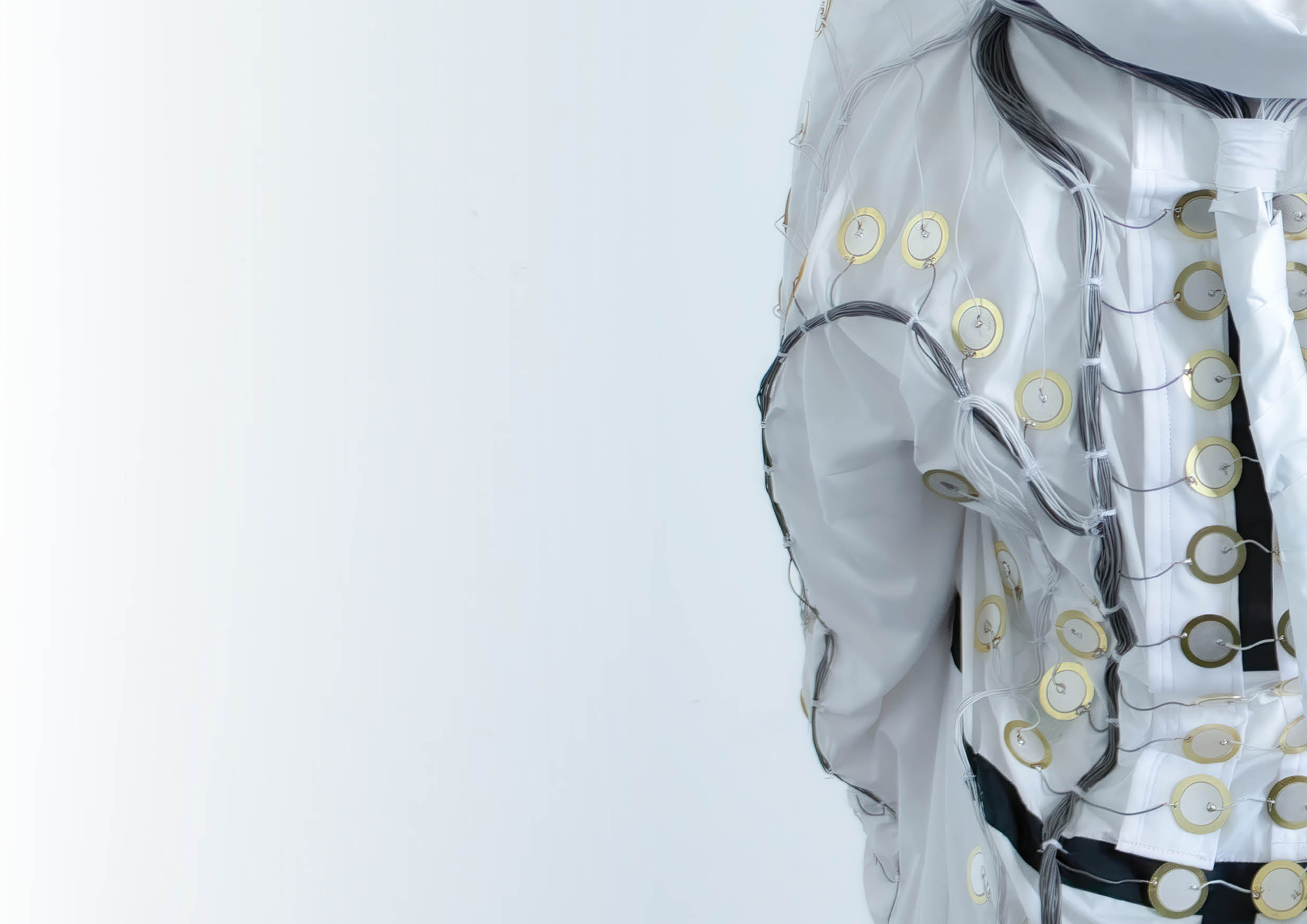
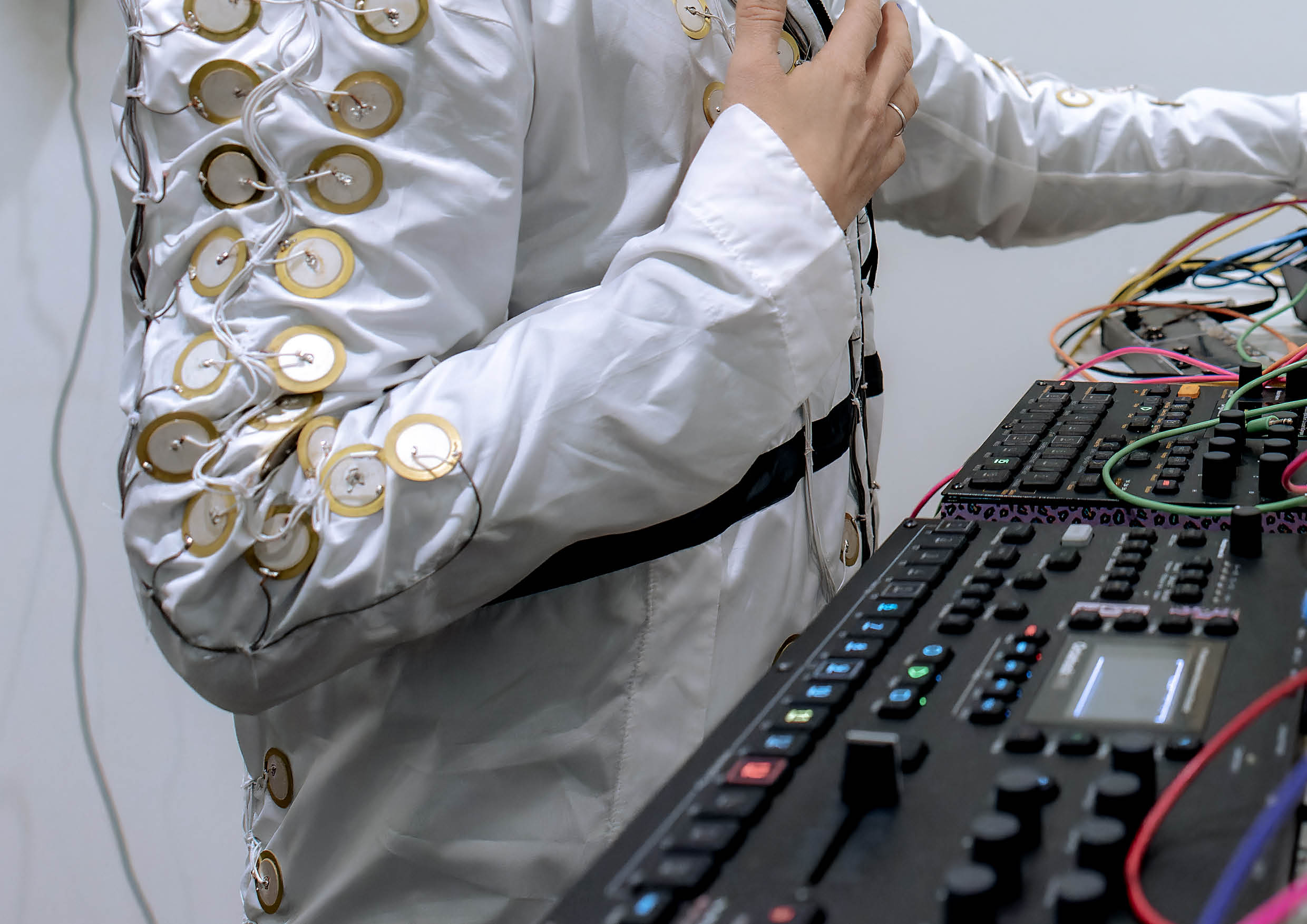


MoCap P-001-2
with Jonas Meyburg
MoCap P-001-2 marks the beginning of a series of explorative performances investigating the relationship between body and sound. At its core is a custom motion-capture garment embedded with 190 piezo microphones. These sensors convert the kinetic energy of the performer’s movements into electrical signals, which are directly translated into sound.
In performance, the wearer explores how their gestures influence the acoustic space, responding to the metallic, sometimes shrill sonic textures produced by the coat. Movement and sound are brought into tension or resonance, creating an evolving dialogue between physical expression and auditory feedback.
The project premiered as part of the Jour Fixe series at LOT Theatre Braunschweig, where MoCap P-001 was performed by a local dancer.
In a subsequent iteration, a sound artist used the garment as a live input source for her modular synthesizer setup, creating a feedback loop in which every movement becomes a new impulse again and again.
2021 | LOT Theatre Braunschweig
Performance: Eva Polinski
watch video
2023 | Studio 10, Oldenburg
Performance: Lil.Lilli
Photography: Izabela Mitwollen



VR5
2024 | Frappant, Hamburg
VR5 is a continuous research project exploring how human communication evolves or deteriorates in computer-mediated space. The project takes on different forms including live broadcasts, field recordings and a collection of transcribed audio snippets.
At the Mit Klang exhibition VR5 took the shape of a live portal into an uncensored, international virtual space where people can meet and interact. The listeners are confronted with the uncontrollable framework of this space, but can intervene in real time via microphone, to agree or disagree (or sing along).
In order to focus on this computer-assisted communication and its implications, the only access to the digital space happens on a sonic level.

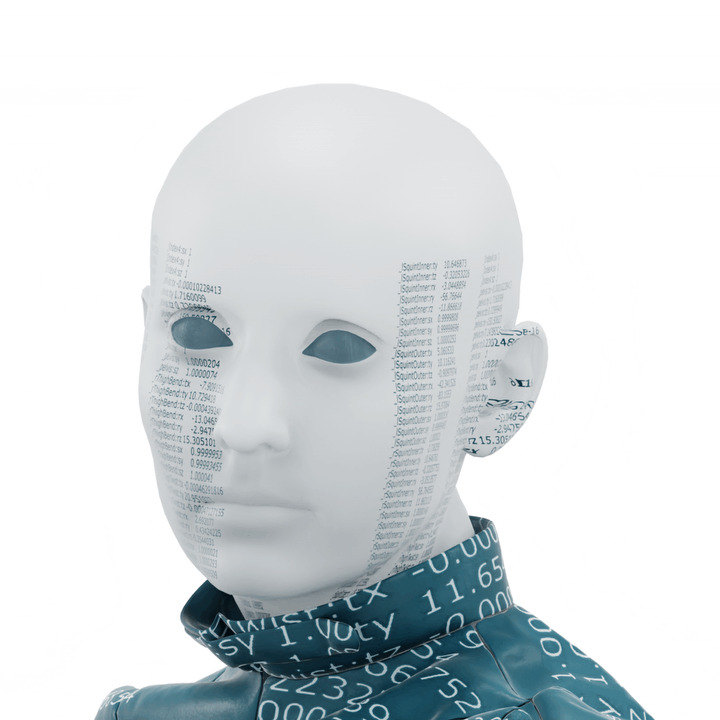


.mvn
2023 | Konsumverein Braunschweig
Starting with a 3D scan of the face, a digital avatar was created using Epic Games’ Metahuman software. A custom choreography was captured with the Xsens and Rokoko motion capture systems and transferred onto the avatar. The avatar’s clothing was then physically simulated using Marvelous Designer, adding realistic movement and material behavior.
In TouchDesigner, the raw motion capture data was translated into numerical values, capturing the position and rotation of each sensor-equipped part of the body. This stream of data formed a living texture, applied directly to the simulated body and clothing. The numbers flowing continuously across the avatar’s surface visualize the body not as form, but as a continuous stream of information.
Sounddesign: Jonas Meyburg
Choreography: Johanna Spieker and Mia Erbguth
Performance: Johanna Spieker
Touchdesigner: Lukas Ruoff
watch video



.mvn2
CGI: Johanna Spieker and Daniel Berthold
Performance: Johanna Spieker
watch video

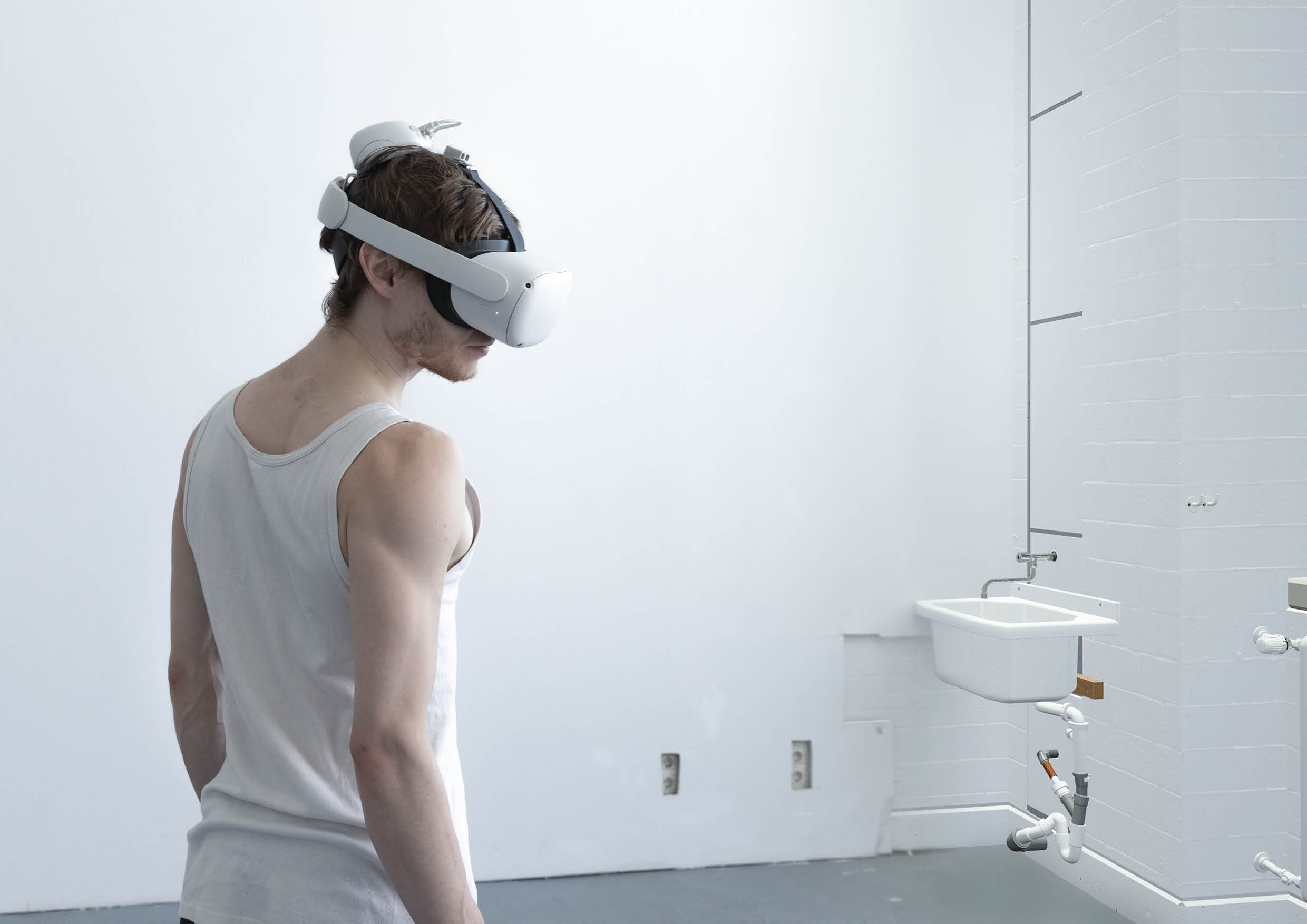
VR4
2022 | Diploma
VR4 is an immersive virtual environment that enables the viewer to have a dissociative experience and question the construction of their own reality.
Developed for the Oculus Quest as a standalone app, it functions wirelessly to allow for the widest possible range of movement, emphasizing the role of the body as an active sensor navigating the space.
The architecture of the real-world room was captured through a combination of traditional measurements and 3D scanning, then reconstructed digitally. Viewers can orient themselves effortlessly in both worlds, as the digital-visual and analog-haptic feedback align. This subtle overlap makes the body’s proprioception part of the immersive experience.
(Of course, it is still possible to break with this immersion, for example by opening a window or turning on the tap).
Rather than opposing digital and non-digital states, VR4 attempts to interweave them. The absence of a body or avatar in the simulation enhances the sensation of being absorbed into the environment. Movement becomes a way of sensing presence, not just navigating space.
Special thanks to Manuel Ballehr
sp
watch video



Pigeon Simulator
2023 | Gewandhaus, Braunschweig
Computer-generated pigeons are projected onto semi-transparent glass surfaces. A rear projection foil catches the rays of light emitted by the projector, creating a holographic effect. The various reflections on the glass surfaces and the shop window front of the empty shop create a fusion of the busy streets and the simulation inside the shop.
While the „real“ pigeons in the city centre have very pronounced visual and auditory senses, we tend to block them out of our perception. Yet pigeons are everywhere; adapted to our infrastructures, they shape the cityscape by their presence and their cooing.
watch video


DER BARSCH
Images of an one-eyed brass born in my fathers aquarium.
Der Barsch was shown as a pop-up intervention at Lee Sushi Braunschweig, during renovations - a strange liminal construction site of a seafood restaurant featuring piles of rubble, a big buddah statue in the corner covered in sawdust and a huge aquarium with koi fish.
watch video
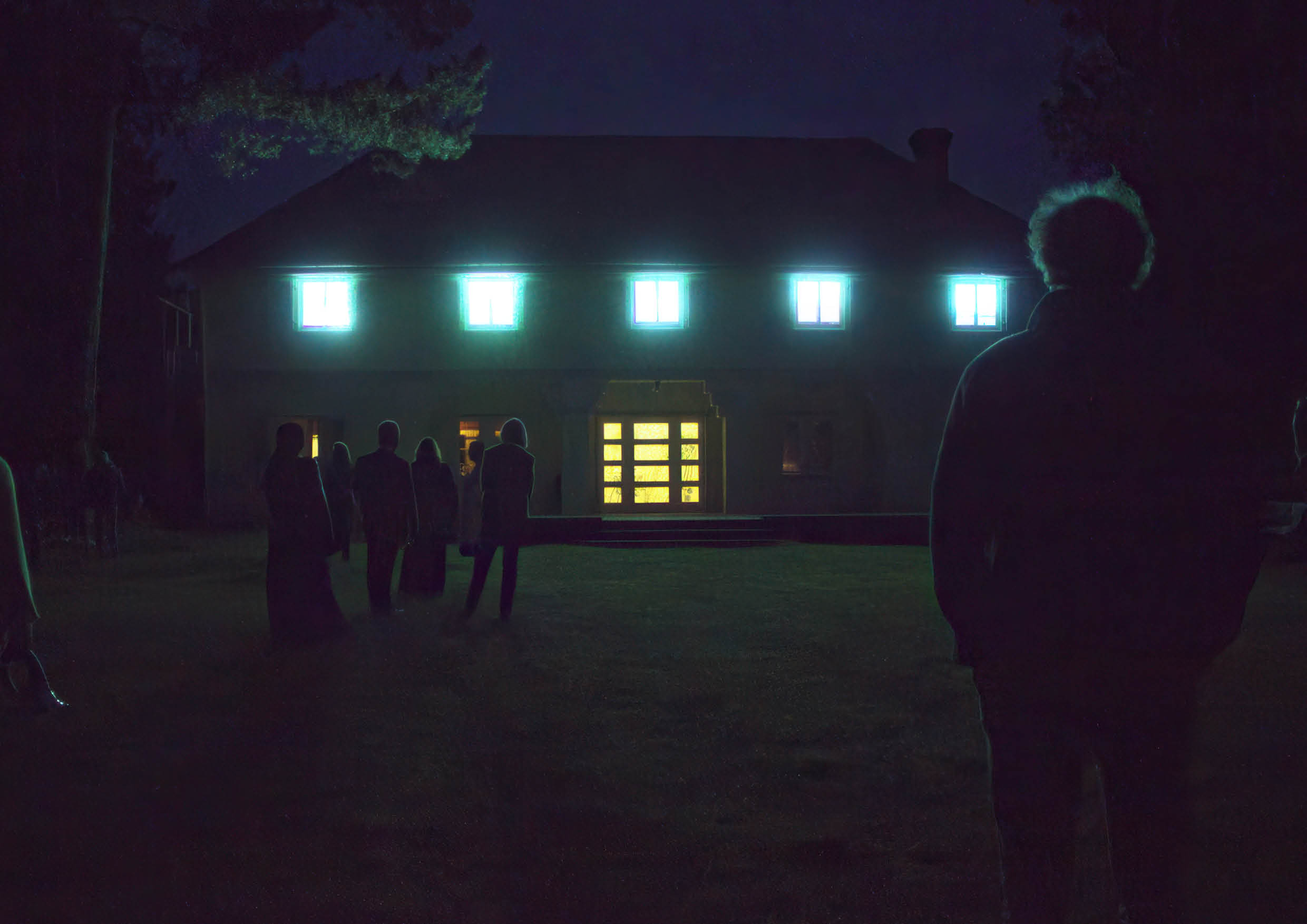
WELLENTÄTIGKEIT
<<Wellentätigkeit! Bitte dem Wellengitter, dem Beckenrand und den Einstiegsleitern fernbleiben!>
This was the announcement they played at the indoor swimming pool in Cuxhaven, where my grandfather and I used to go swimming. At Herrmannshof, it was blasted over two far-reaching sound systems positioned to the left and right of the manor house. The sound, similar to a foghorn, could be heard for miles.